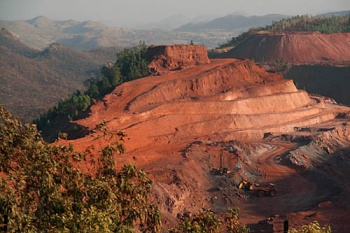Difference between revisions of "Mining and Metals"
(associated categories all added) |
(aluminium category) |
||
| Line 82: | Line 82: | ||
*[http://www.powerbase.info/index.php/Category:Mining_and_Metals:_Trade_Associations Mining and Metals: Trade Associations] | *[http://www.powerbase.info/index.php/Category:Mining_and_Metals:_Trade_Associations Mining and Metals: Trade Associations] | ||
*[http://www.powerbase.info/index.php/Category:Mining_and_Metals:_Transnational_Corporations Mining and Metals: Transnational Corporations] | *[http://www.powerbase.info/index.php/Category:Mining_and_Metals:_Transnational_Corporations Mining and Metals: Transnational Corporations] | ||
| + | *[http://www.powerbase.info/index.php/Category:Aluminium_Industry Aluminium Industry] | ||
<!-- | <!-- | ||
Revision as of 13:37, 19 July 2011
Welcome to the Mining and Metals portal on Powerbase | ||
|---|---|---|
Why mining and metals?Metals are all around us – from your can of lemonade, to your bike, car or plane, to your laptop, buildings and pots and pans. But we rarely think about where these materials come from and what impact they have on the planet and people. Mining and metals companies, with the support of their trade associations, think tanks, corporate social responsibility programmes and PR agencies, try to paint their products as clean and green. Yet these are among the most polluting and energy intensive industrial processes in the world, often linked to the displacement of indigenous peoples, poor working conditions, conflict, human rights abuses, pollution, climate change and militarisation. Around 30 per cent of aluminium, for example, is used by the arms or 'defence' industry, making it an important 'strategic metal' for most governments. [1] |
|
|
| ||||||||
References
|

